An oft-debated truism about the nature of pain says that “all suffering is equal.” For many, the notion that starvation or torture and anxiety are on the same plane can feel offensive. According to renowned yoga teacher, Tiffany Cruikshank, founder of Yoga Medicine, “All suffering is similar. Whether we’re suffering from relationship trauma or low-back pain it wears on our consciousness in a similar way.” Step into any yoga studio around the world and you’ll likely find that many people in the room came to yoga because they needed to heal in some way. Reformed dancers, anxious CEOs, and single moms all join together to breathe in unison and grow through the practice.
But why is yoga so healing? Cruikshank says, “When we feel pain we feel separated from our self and from our own body; we feel disconnected. In yoga, we’re uncovering what exists inside of us and we learn to see that what’s there is already whole and complete.” The identification with wholeness and completion that yoga heralds is not only a result of connection to breath and movement of the body, but it dates back to Vedic philosophy and the foundations of yoga. The ancient Sanskrit mantra “Sohum,” or “I am that,” is the affirmation that the individual self can identify with the essence of the universe. The yoga practice brings us closer to this notion and thereby rewires our own perceptions of pain: “It’s about patterns and reworking them,” Cruikshank says. (Yoga isn’t the only healing activity. Learn more how diversifying your workout is good for your overall health.)
The following stories come from people who have used yoga to heal wounds of grief, physical disability, emotional trauma, and disease. As Cruikshank says, “Yoga can’t cure everything, but it can help a lot with the process.” We stand in solidarity with these and other suffering beings, who choose to work toward healing and devote themselves to the process, however uncertain and painful the path may be.
Corrine
“I Now Can Say That Yoga Saved My Life”
I don’t really see my story as being so inspirational—I just never thought of myself like that. I was always a very fit person; I was on my spin bike every morning and my yoga mat shortly thereafter. Yoga for me was purely fitness at first—I liked the mantras and mudras, but I didn’t really understand them. For me it was just about the physicality—and then I got sick. I don’t think anyone ever expects to hear the words “you have cancer.” When cancer came knocking it pounded down the doors and my whole world changed. I remember after three big surgeries and right before chemotherapy, my teacher then, KK Clivio, would come and help me breathe, and that got me through the following surgeries. I remember the first time she got me into Pigeon with many, many props, I finally let it go and just cried. And she just kept saying “Breathe. All you have to do is breathe. We’re gonna get you through this.” I remember so many people telling me I had to fight, but you don’t relax and you don’t release and you don’t breathe when you fight, and then I finally realized I just had to show up. I just had to show up every week and sit in that chemo chair and let the medication do what it needed to do. I now can say that yoga saved my life.
I had multiple surgeries and I’m still working through cancer. I have no feeling whatsoever under my left armpit down to my elbow, and I’ve come to terms with the fact that my practice is not going to look like everyone else’s, and I’m not going to be able to handstand without support. And that’s okay, because support is what gets everybody through; we all need help. It’s my yoga practice and my community at Laughing Lotus Yoga Center in New York City that helped me find the true meaning of family and support, and how important it is to let go and just breathe. I just keep showing up, and I keep praying for myself, for my friends who I’ve lost to breast cancer, and for all who struggle with this terrible and cruel condition.
Acacia
“It Used to Bother Me That There Were Some Things I Would Never Do”
I started doing yoga about 10 years ago to help me with my posture. I was born without my left hand from the elbow down, and I had a lot of pain in my back from the lack of balance. As a person with a different body from other people, I never felt quite comfortable in [class environments] where it felt like part of the goal was to be the prettiest. I feel lucky to have a lot of yoga teachers in my family. My practice really started to become more regular and coherent when I traveled in India after high school and started to learn Ashtanga. There was no ego in the room.
Doing yoga with one hand can be tough, and I often need to use props or an alternative pose to get the same stretch if I’m not physically able to do the pose. In the last several years there has been a change in my practice and my approach to it. It used to bother me a lot that there were some things I would never do. I would see pictures of famous yogis in sexy handstands and think that if I couldn’t be that, then I wasn’t really a yogi. That’s when I started learning more about yoga philosophy and coming to understand my practice in relationship to myself, not to others. There are things I can’t do and shouldn’t do; me doing them would just be to say I did or to prove I can, when it’s not really the right way for me to practice. I’ve come to learn that it does not matter what everyone else is doing. I can do a hundred yoga classes, but if I don’t consciously breathe and connect with my center of strength, I’m just working out.
Something I always wanted to do but thought I never would is any kind of inversion arm balance. No crow, no handstand. But last week I did my first forearm stand! It just took 10 years of building core strength, the support of an amazing teacher, and the patience to be okay with where I’m at.
Dayton
“I Never Went to a Yoga Class Until Her Last Year of Life”
What my story is really about is a yoga mat—my wife’s purple yoga mat. When she was 35 she was diagnosed with stage four breast cancer. She started seeking out ways to conquer the cancer outside of western medicine. After one of her alternative doctors recommended yoga, she started a consistent practice. She’d practice on this purple mat, upon which she etched her name in black magic marker. My wife, Ali, battled cancer for 12 years, never once going into remission. She always told me how much the yoga helped her, but I never went to a class until her last year of life, when I felt an urge to practice. Though I’d always had a prayer practice, I never really believed much in the spiritual elements of the practice, until the very end of Ali’s life. We were sitting in the hospital one day when she told me she was no longer fearful of death. On the day Ali passed away, I went to her mat, at a local studio. I told the yoga teacher, who was a friend of mine, about my loss. At the beginning of class, she told the other yogis in the room about my loss. As class went on, I felt more and more empowered—stronger than ever. After class my teacher helped me realize that the strength I felt was the collective energy of the yogis around me. All my previous doubt around ethereal energy dissipated, and now—I believe it. There really is so much energy that is present when practicing yoga in community.
And now, at age 53, I have strength from my yoga practice I never imagined I would have. There is no pause button on the grieving practice, but now, all this time later, I get on my wife’s purple mat, which has no signs of disintegration. Though the marker of her name is no longer present, I feel her energy on the mat.
Molly
“Yoga Gave Me Freedom After Being Isolated by the Weight of Rape”
I was initially drawn to yoga as a way to support and maintain my physical health. However, my relationship to my body, my mind, and my spirit—as well as how I perceived and experienced yoga—radically changed when I was raped in 2003 while running in a public park. Yoga provided the necessary doorway into discovering how I might understand and address the vast scope of this particular kind of wound, as well as a direct and tangible way to reorient myself within my own shape.
I have found yoga to be the most accessible and most holistic method of healing for me—and I am still actively healing. The practice helped me address physical symptoms, overcome mental challenges, navigate relationship disruptions, and approach the inevitable existential questioning that accompanies this kind of trauma. Practicing yoga showed me that at my core, beneath my sense of darkness, separation, and total devastation, there was an unshakeable, unified, and life-affirming desire and ability to heal. It gave me my first glimpse of freedom after feeling isolated by the weight of rape. After experiencing what I would describe as an “out of body” event during my assault, coming back into my body through movement, breath, and focused awareness on sensation was vital to me feeling safe, grounded, and regaining control.
Yoga philosophy naturally scaffolds much of what I seek in my journey to recover: to fortify the union of the body, mind, and spirit; to recognize and take advantage of the intrinsic connection between the physical, emotional, and energetic expression of the human system; to notice the delicate balance of directing effort into healing while simultaneously allowing that which organically emerges or disappears. Yoga continually roots me in the present moment, where all that has happened and all that is yet to come, can dissolve—however briefly—and I am able to experience, observe, and nourish what shows up for me in the here and now. It enables me to boldly trust and respect the nature of my own distinct process while connecting with that which is beyond my intellectual recognition. Being connected to myself in a visceral and embodied way has been key to my resilience and sustainability as a person and, importantly, as a professional in the movement to end sexual violence who also works directly with survivors.
Nousha
“[After Thyroid Cancer] Yoga Brought Me Back to Me”
Five and a half years ago, I was diagnosed with thyroid cancer. Everything happened super fast, from diagnosis to tests to surgery and then treatment. As hard as facing cancer was, dealing with the aftermath was even harder. After my treatment I became so weak I couldn’t stand up or walk to the bathroom by myself. So suddenly I went from being an active, hyper, fit person to this weak body that I couldn’t recognize anymore. The morning of my surgery I made myself a promise that I will be okay and I will not waste the second chance I’ve been given for this life: I will live in a different way and make every day count. So I did. I didn’t give in to that weakness for too long and started educating myself on health, natural remedies, good food, mindfulness, and anything I could get my hands and mind on. My best friend came to me one day and mentioned she found a cool yoga place and suggested we go together, so we did and that was it! The most amazing goddess was teaching the most inspiring yoga class, and something happened to me, right there. I never looked back since, not even a day without yoga and mediation.
Yoga brought me back to me, to the real me, to my body, to my soul. I started building my strength back, my health started to improve, my mind became more focused, more open, and every single day stared to look like a brand new day. I traveled several times to India, I just needed to go to the source, I was so thirsty to know more, learn more, see more, and experience more. I learned a lot about life, about myself, about love, about openness and acceptance. I learned to forgive and let go of many things for my past and my childhood. India changed my life and yoga saved my life.
Chris
“Yoga, Meditation, All of It, Is a Great, Healthy Drug”
Yoga works. It makes me feel good. When I feel good, I am more prepared to navigate life’s inevitable challenges, whatever they may be. After practicing for many years, my body burns for asana if I haven’t practiced in a couple days. Similarly with meditation, a very challenging discipline for me, there are times when I just know I need to sit quietly with myself. Honestly, yoga, meditation, all of it, is a great, healthy drug. I’d rather be addicted to these things rather then my shame, guilt, depression, or drugs. Yoga gave me a place to actually be with myself, probably for the first time in my life.
I lived 25 years before I tried yoga, but I don’t know how much energy I actually put into truly honoring and listening to what was going on inside me. I would often get overwhelmed with emotions. I struggled and still struggle with depression, but we’ve got to do something to try and heal ourselves enough to engage with the world, otherwise I know that I would always be self-absorbed and trying to just survive. Yoga helped me figure out how to listen and taught me that what was going on inside me wasn’t bad or weird or so different from anyone else. I had no perspective. Yoga also taught me a new way to be physical. I couldn’t just work hard and push through. I needed to add a sweetness, a piece of my heart, to my physicality. There was a lot of healing in that process.
Yoga is often a person’s first introduction into real acceptance. Self-acceptance, acceptance by the people you are practicing with. I think yoga can be an inner revolution. Like Bob Marley said, “Emancipate yourself from mental slavery, none but ourselves can free our minds.” Yoga is one way to do that. And once you heal yourself enough, go help people somehow.
Angela
“More Lupus Patients Deserve to Hear Great News Like Mine”
After 18 years of battling lupus (SLE), migraines, and fibromyalgia, I had grown frustrated with living in constant pain. Encouraged by doctors for almost two decades to only do light exercise, I grabbed onto the fear that if I overdid any activity, I would be stuck with a painful flare-up. So I stopped moving, a once-dancing child now frozen into safe positions in hopes of prolonging my life and avoiding further pain.
With the help of dear friends encouraging me to try yoga years ago, I can now ease through painful moments with better focus and awareness and have been cured of what most think is impossible. Yoga continued to be a gentle lifeline, keeping my body flexible even with the loud cracks and pops emanating from my achy joints. It gave me enough strength to break free of my pain cycle one night this January, when I combined a 3 a.m. solo dance fest in my bathroom with a cool-down of long yoga stretches. The hour of intensely pushing through the pain gave me a few hours of relief from my migraine and body pain, and I was hooked. A regular routine of two daily workouts including dance, yoga, and skateboarding now keeps most of my pain under control. If I’m hurting now, the first thing I do is stretch out into Downward Dog, twist my arms into Eagle Pose, or simply ‘rag doll’ it up until my pain level drops and I can move deeper into the poses. Then my inner resolve to feel great kicks in, and I strive for the burn in my muscles, deeper breaths and the soothing fire of my blood pumping. To feel pain-free after working out is such a blessing each time.
Two months ago, my doctor gave me incredible news: I am now cured of lupus! Completely healed! Daily physical activity like yoga combined with a more natural medicine route definitely played a part in this. More lupus patients deserve to hear great news like mine, and to live their lives as completely as they can. With a body that is healed and free from an “incurable” disease death sentence, I’m on my way to fulfilling dreams like sailing around the world with my husband and teaching my sons to surf one day.
Stephanie
“My Life Depends on My Sobriety and My Sobriety Is Supported by Yoga”
I came to yoga four years ago at a community college, and I was still in my addiction at the time. It was incredibly challenging for me. I had so much difficulty being still and in the present moment. I finally sought treatment for substance abuse in 2012. When I was there, I attended a counseling session in which I was asked about my plan for when I left. I was asked to think of positive activities that would support my sobriety. One thing came to mind: yoga. When I returned, I made practicing yoga a priority in my life, as it still is today. My yoga teacher at the college was in recovery from addiction. I began taking classes from her at the studio where she taught. She was such an incredible inspiration to me. I saw the way yoga worked in her life, and believed it could do the same for me. The way I see it, my life depends on my sobriety and my sobriety is supported by yoga. Yoga continues to challenge me, and I feel the growth in myself because of it. After practicing I feel relaxed, and many times it helps me to regain a more positive outlook. I have the ability to silence all the noise in my head through yoga. It helps me to calm down or be lifted up.
Yoga continues to teach me coping and life skills. Yoga soothes me. That is a priceless gift to me. I have always had a lot of anxiety. I sometimes think my substance abuse was a response to this. To be able to be soothed by others and to be able to self-soothe is incredible. Yoga is continuously helping me to heal. The human connection the yoga community provides me has replaced the unhealthy people, places, and things I once engaged with. Practicing yoga helps me to transform the pain of my past into strength. I feel safe when I’m practicing yoga. Feeling safe wasn’t always a given in my life. Yoga has given me the ability to access a feeling of safety both in and out of the classroom. It has also given me a greater sense of self-worth and helped me to cultivate kinder self-talk. I came into recovery lacking a sense of identity. Practicing yoga has taught me about myself, and helped me to get in touch with who I am. I feel that spending time in the past can be really unproductive, especially when the past involves trauma or brings up feelings of shame or guilt. Yoga has taught me how to access the present moment, which is so important to my recovery.
For those of us in recovery from addiction, substances were once our primary coping tool. Yoga provides many of the effects that I was subconsciously searching for in my addiction without any of the repercussions. Yoga gives me permission to let go of worry, at least while I am practicing.
Dina
“I Walked Out [of My First Class] with My Lymphedema 100% Gone”
In January of 2008, I was diagnosed with breast cancer that had spread to my lymph nodes. I went through a mastectomy and axillary dissection. The axillary dissection caused lymphedema, or swelling, in my left arm because the nodes were no longer there to process lymphatic fluid. I started yoga off and on when I was 20 but became committed when I was 50. I practiced Bikram yoga until 2011, which helped me sweat out the residual chemo poisons, but it did not help with my lymphedema. When Teri Poch started an aerial yoga studio in 2011, she said it would be good for my lymphedema. I went into my first class with a pocket of fluid under my arm, and walked out with my lymphedema 100% gone. I said “I’m coming back tomorrow,” and immediately started practicing six times a week. So long as I continue to practice aerial yoga, my lymphedema is controlled, though I still have to manually move the fluid when I’m on vacation. In class, the aerial yoga hammock moves the fluid.
The other side effect from chemo is peripheral neuropathy. It feels like you have stones in your shoes where you used to have toes and the ball of your foot. You no longer feel things directly—all you feel is pressure. I had several bad falls, one requiring surgery for a shattered orbit of my eye. After 2 years, a neurologist said, “If you don’t have your feet back, they’re not coming back.” But it’s not true. The hammocks help with that. Now, I can actually feel the direct sensation of touching my foot.
There are so many women suffering from lymphedema and peripheral neuropathy. Recovery is active, not passive, so I encourage other people who have gone through this experience to try out aerial yoga. Aerial is like playing. You have a blast doing it. I’m a scientist, so I’m all about the data. I find yoga really helps calm me down from the stresses of my job, and aids with the insomnia from the medication I take to suppress all estrogen in my body since I had an estrogen-sensitive tumor. One of my teachers always says a mantra during class: “Can you let it go?” That always sticks with me. Can I let these things go, and have some time for me?
Nick
“Yoga and Meditation Gave Me Respite from the Pain”
When I was a 16-year-old punk kid in Northern California, my heart was more thoroughly broken than ever before. My first boyfriend had just broken up with me; I had two hours to kill before my bus would arrive to take me home; I was closeted and my family thought that I was at a friend’s house. I wanted to die.
Instead, I went walking down a side street and came across a yoga studio. “Grand opening!” the banner out in front said, “First week free!” I decided to go with it. The class was surprisingly difficult, but the most challenging part was Corpse Pose at the end. I felt my body surrender into gravity, laying in the stillness of the dark studio, and in that surrender I touched something deep within myself that was tender and open, a basic and invincible goodness at the core of my life. I walked out of that class in tears and [went] back the next day.
After two years of hatha yoga practice I experienced dramatic physical benefits—my scoliosis and hyperlordosis were corrected—but the most meaningful shift I experienced was in the emotional realm. Ever since I was a child, I struggled with depression, intrusive thoughts, and toxic guilt; as I hit my 20s, these hit a dangerous peak. Yoga and meditation gave me moments of respite from the pain, and enabled me to experience the basic goodness that is the core of reality and the core of my identity. Fifteen years after that first yoga class I’m still moved to tears when I touch that basic goodness.
Today the motivation behind my practice comes from being a teacher at The Art of Movement studio in Portland, Oregon. I started teaching five years ago, and right when I was getting started a very wise teacher pointed something out to me: Before you become a teacher, your practice is fundamentally to benefit yourself. However, once you become a teacher, your yoga practice is fundamentally to benefit your students, and your teaching becomes the practice that benefits you. The act of teaching yoga is an act of throwing yourself into a crucible, and the light and heat of that crucible has been transformative for every aspect of my life.
Dana
“My Practice Now Is Recognizing That Injury Is Inevitable”
Five years ago I was finishing my master’s degree while working full time, very much depending on my yoga practice to stay centered. And then I experience a herniated disc in my neck. As I’ve learned recently, there can be a direct relationship between the location of an injury and what is going on in your life. And this certainly has been true for me. An injury in the neck points to an issue with the throat chakra, the energetic center of communication—both listening and speaking your truth. I wasn’t listening to my body and I have struggled with speaking up since childhood.
When I was able to practice again after months away I was oozing gratitude for just being able to step on my mat. Then came the frustration and anger that my practice didn’t look and feel the way it used to. After that, I moved into a protected and tentative place for a long time. I’m often still there. But luckily, I found yoga teachers and a community that both honored my injury but also didn’t let me use that as an excuse to keep from challenging myself in safe, smart ways. There were ways to make my practice expand, not only with asana but with meditation, mantra, Reiki, and most of all in my off-the-mat practice. Have that difficult conversation. Stand up for what you believe in. I still have trouble finding that ever-shifting line of when it’s appropriate to push myself or when it’s time to pull back. And while I don’t want to get injured again, my practice now is recognizing that injury is inevitable. We are alive, so we have the potential to be happy and find love and also to get hurt in all sorts of ways. So I hope whatever happens down the line, instead of treating my body or larger energetic picture as the “other,” as something outside of myself, I can smile and recognize it as all part of the same continuum, not good or bad, but something that just is.
Tony
“Yoga Almost from the Start Revealed Another Way”
I’ve been sober since April 22nd, 1991. For many years in my sobriety, I remained unhappy, angry and ill-at-ease with my life. I gained a reputation at work as being difficult, abrasive and short-tempered. Yoga almost from the start revealed another way, and revealed just how badly I was breathing! After doing yoga for a couple of years, yoga was doing for me what I had been unable to do before: soften, and open me up to life by allowing me to become comfortable with myself. My work continues to place me in situations of great stress and trauma. Yoga has provided a toolkit of breath, meditation and asana that allows me to breathe and move through whatever situation may arise. I don’t take myself so seriously. I can breathe through the moment that may be stressing or agitating me. I fail and stumble from time to time, but now, as in yoga when I fall out of a pose, I bend, breathe, compose myself, and move on… ‘til the next time!
A yoga mat is a sanctuary, a magic carpet; no matter how inflexible or self-conscious people may feel about their bodies or their place in the world, yoga and the people they will meet in a yoga class will support, assist, and encourage them in a way that may transform their lives.
Linda
“The Chronic Pain … Is Still with Me, Though Lessening, and I Am Healing”
I’ve been teaching yoga in Portland for 10 years, while dealing with chronic pain, spinal injury and two back surgeries for the past five years. The chronic pain and nerve damage, numbness, and weakness is still with me, though lessening, and I am healing. I’ve seen acupuncturists, body workers, naturopaths, chiropractors, yoga therapists, physical therapists, mind-body counselors for pain management, and have continued with a modified personal yoga and meditation practice. This work all helped me to unleash deeply held emotional trauma which I learned was necessary to release pain in my body. I’ve learned through being with pain in my body how to be with the uncertainty in my life.
The coolest thing about my whole experience is how I’m finally able to accept myself, and especially this new version of me, just as I am, in my body, mind, and spirit today. I’ve gained weight through these past five years with my back, hip, and leg pain, as I haven’t been able to be active like I used to. I am now eating well, thinking well, doing my physical therapy and yoga practice, and addressing a long-held habit of emotional eating to fill my hungry heart. I’m healing on many levels and can honestly say that I’m grateful for all of the curves on the road of this journey to discovering wholeness.
Kelly
“Yoga Allows Me to Distill My Grief Down to Its Essence, Which Is Love”
I came to yoga with a broken, grieving heart. In the beginning of my practice 5 years ago, I was mourning the loss of my brother. Over the course of my past five years of more dedicated practice, I also lost my mother and father. I needed a tangible way to deal with my grief, and I found that when I made yoga an ongoing part of my life, I could use the practice as a tool in moving me through these losses with tenderness and grace. Yoga allows me to distill my grief down to its essence, which is love. It reveals a wealth of love and compassion in places where only anguish once existed. There is so much to be said for the simple acts of breathing and moving and listening to what is rustling in your heart. It has shown me my strength, both emotionally and physically. It has shown me how to listen to myself and navigate this complex life with curiosity and wonder, rather than fear and sadness. Within all the chaos, yoga has been my constant and I am beyond grateful to have it. Before yoga, I never really took the time to seriously check in with how I was feeling emotionally or physically. I just felt overwhelmed by the constant barrage of emotions over which I seemed to have very little control. The simple act of allowing myself those couple of hours a week to practice has been incalculably beneficial.
All yogis arrive in their own time and in their own way. You don’t have to be a fitness star. You don’t even have to be strong or flexible. It’s not about looking cool. It’s about self-inquiry. It’s about taking time to show up for ourselves in a nurturing and sustainable way. I never feel more beautiful than when I’m doing yoga.
Meghan
“My Practice Helps Me Identify This Injury as a Gift”
My yoga practice has been instrumental in the healing of a repetitive stress injury from 10+ years in the service industry. The symptoms flair up after extended time on the computer, if I hold a pen wrong too long, or if I don’t support my wrist properly while driving my manual transmission car. All are opportunities for observation and awareness of my physical patterns. My practice helps me identify this injury as a gift of a deeper relationship with my body, and an understanding that no job is worth my physical well-being.
While in the height of pain from my injury, I was forced to truly listen to my body’s needs. Through this honest listening, I discovered modifications that still allow me to practice in a class setting. Many times I find myself in Child’s Pose. At first, this hurt my ego: “I can do it!” “I’m strong enough, I swear,” “Everyone thinks I’m lazy.” I have learned to let these thoughts pass through my mind and focus instead on my breath. We were all beginners. We are all still beginners. The practice is your time to listen to your body and be on your mat. We are the only ones that know what our body needs in any given moment. Our practice is to honor what we hear.
I often joke: When I first began my asana practice, I hurt. Now if I don’t practice, I hurt! Every time I come to the mat, no matter what, I always feel better. About 5 or 6 years ago in a perceived slump in my practice, I said to a friend that I needed to “do yoga.” She responded: “Meghan, we are always doing yoga.” This has stuck with me and helps me carry my practice off my mat and into my daily life.
Chloe
“I Struggled Under the Mask of an Eating Disorder and Exercise Addiction”
Movement was always a part of my life. I was a classical ballet dancer and I struggled under the mask of an eating disorder and exercise addiction for many years of my life that completely numbed me out away from the struggles and anxieties of every day life. I came out of that many years later when I decided I wanted to heal. I didn’t know what my body felt like and there was no connection between my body and mind once I stopped dancing.
I found yoga, which was the only thing I was allowed to do during my healing process. I walked into a studio and into my practice and have been back every day since. Yoga played an integral role in building a thread between all the parts of myself: body, mind, and spirit. I now teach yoga and feel so grateful for the experience of healing through yoga, and greet my students exactly where they are. I feel blessed to share my story.
This was piece was made possible in collaboration with Sophia Emigh and Nousha Salimi.
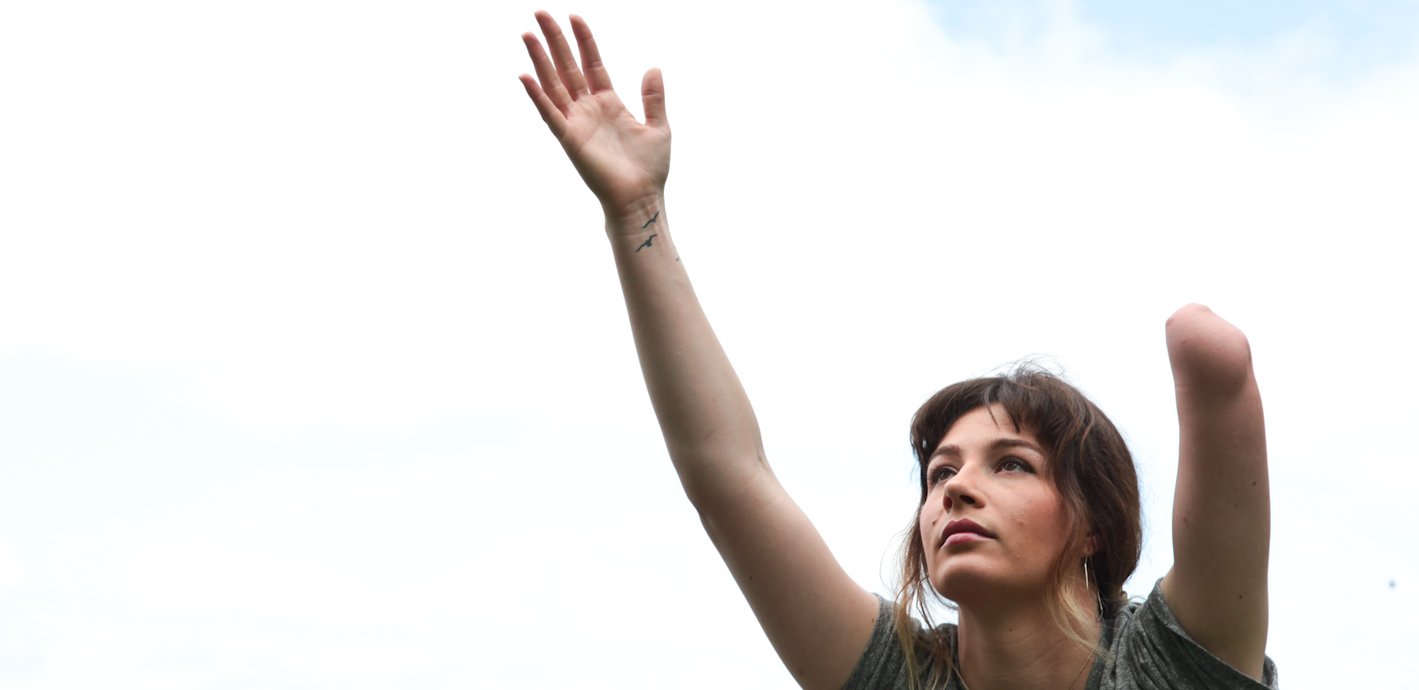
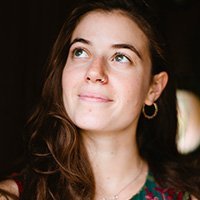
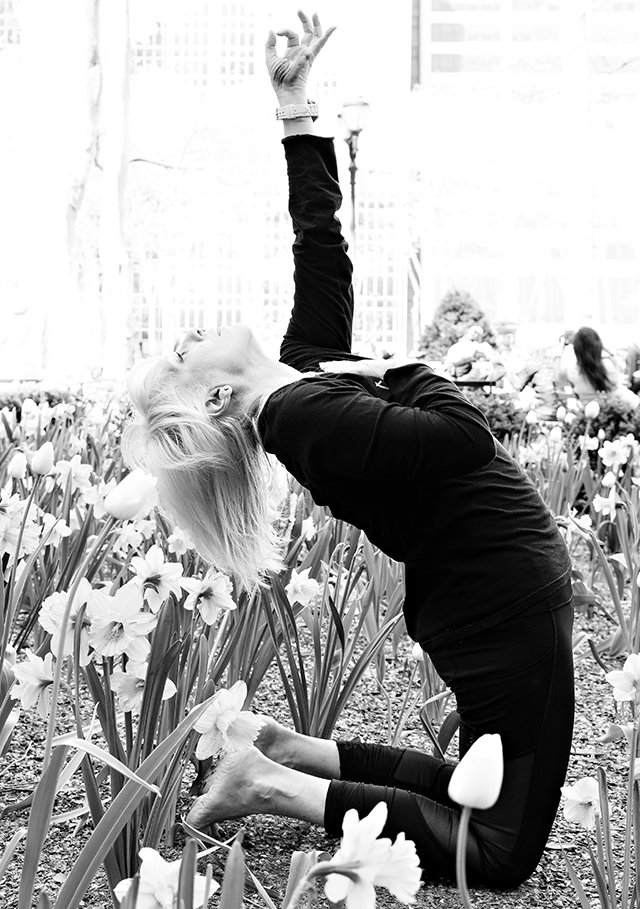
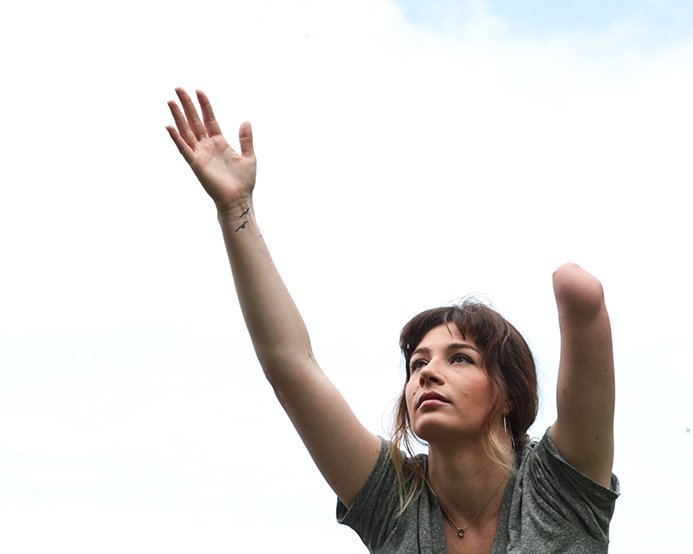


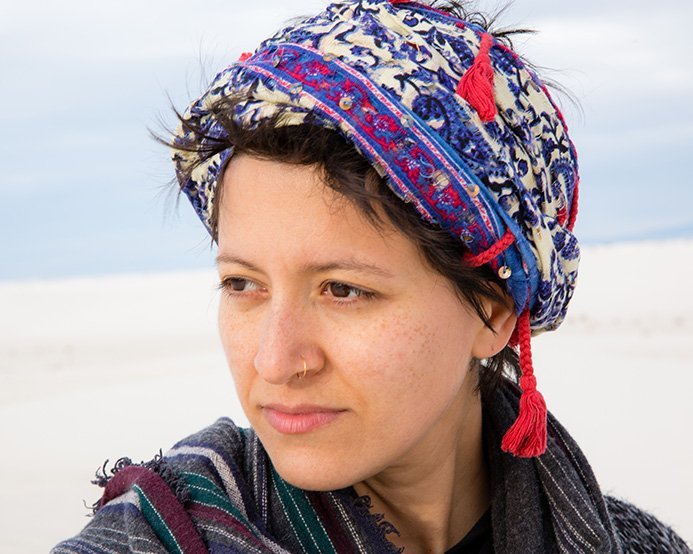
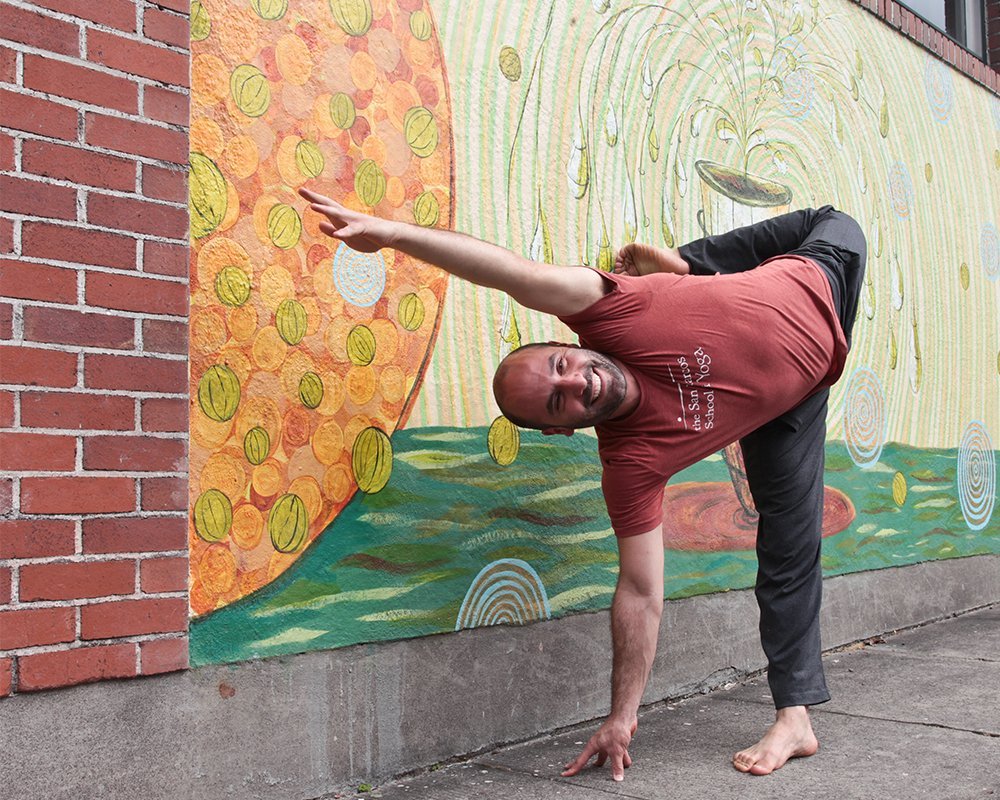

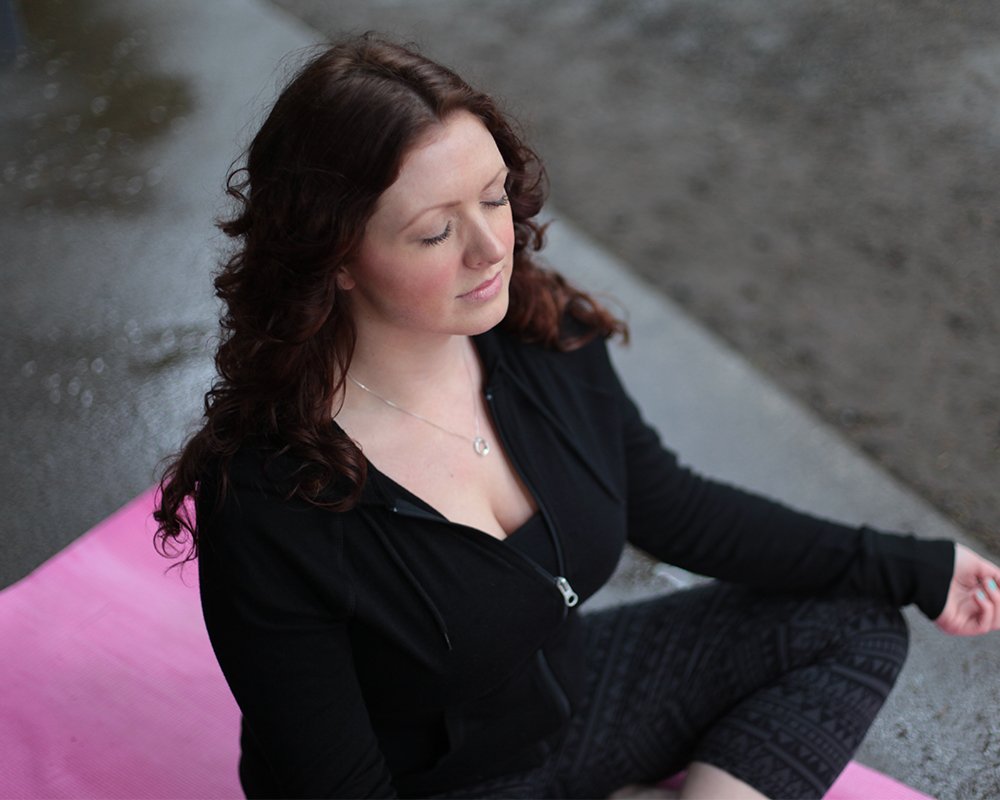


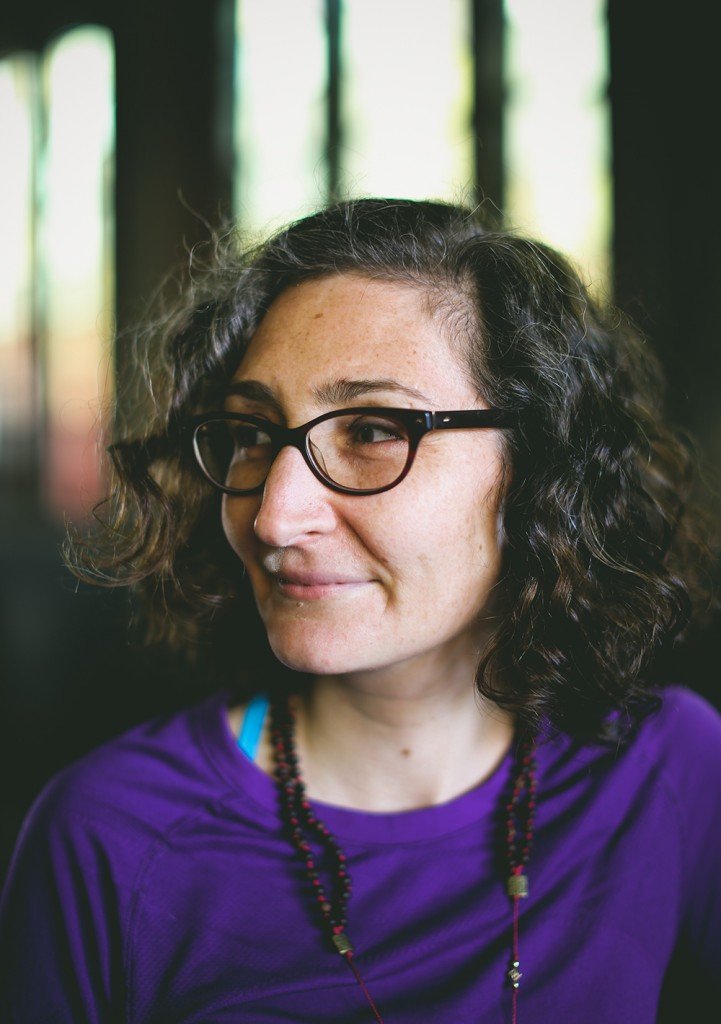



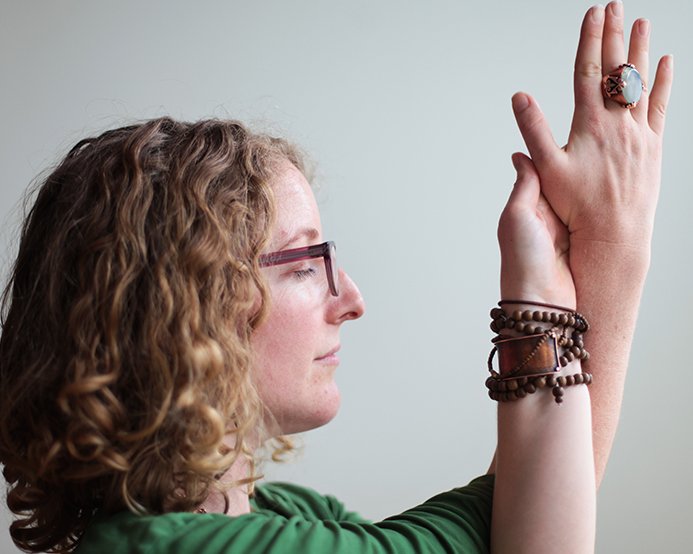


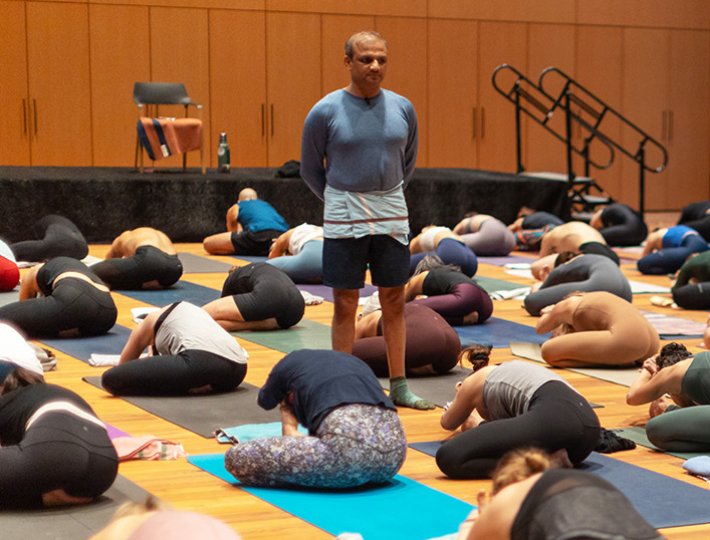
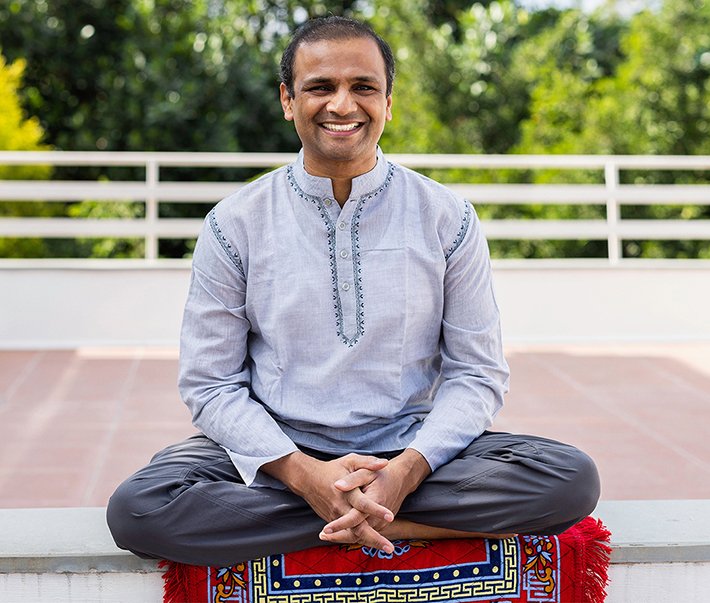
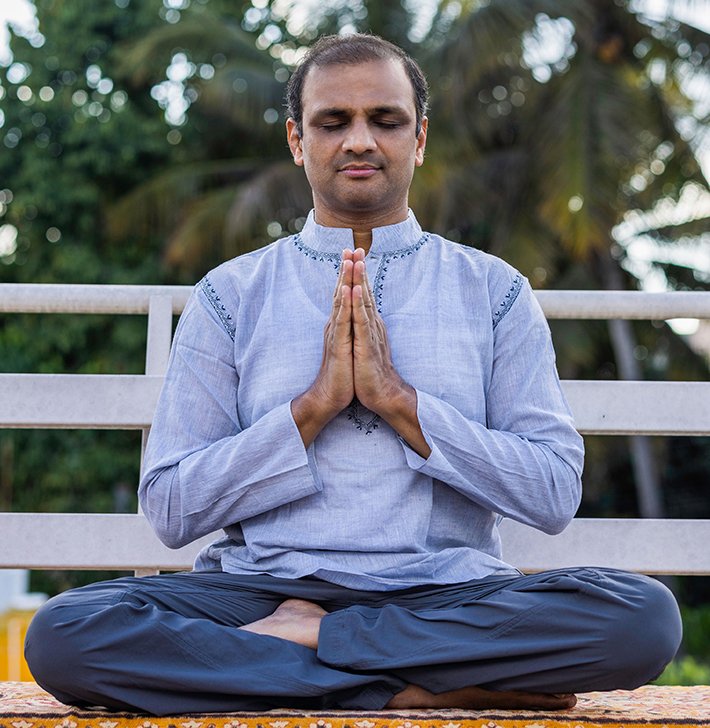



Comments (0)